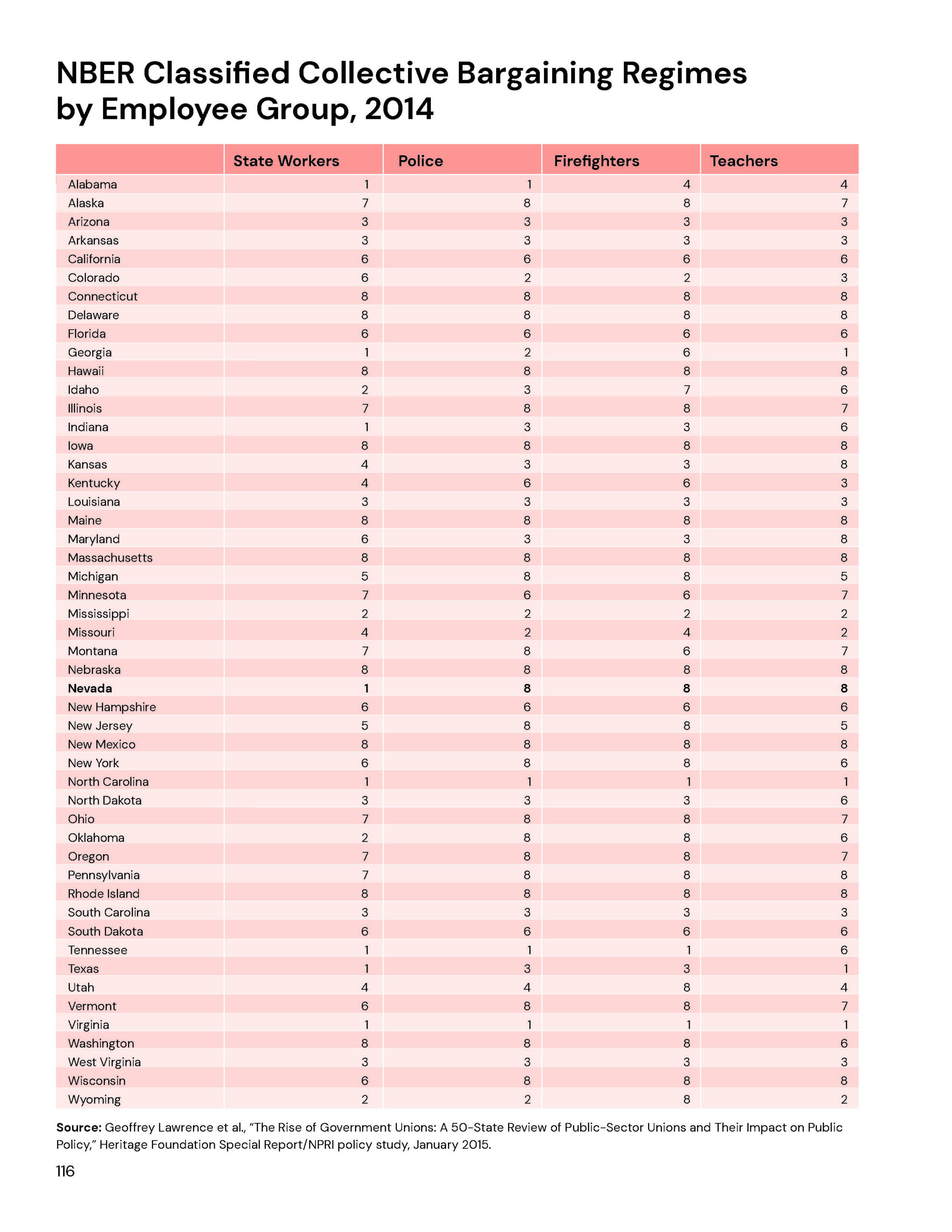Cost of Collective Bargaining
Nevada’s first collective bargaining law, passed in 1965, expressly prohibited bargaining with government unions for all employee groups. It followed similar legislation passed in North Carolina six years earlier and stood in stark contrast to a concurrent wave of legislation across the states awarding union leaders representing government workers broad, coercive powers.
Union hostility toward this law, however, prompted picketing by teacher union operatives on the Las Vegas Strip aimed at disrupting the state’s most important commercial center. Acting at the behest of business leaders who wanted the disruption ended no matter the policy cost, Nevada lawmakers reversed the 1965 law during the 1969 legislative session. The new Local Government Employee-Management Relations Act required administrators within Nevada’s local governments to bargain collectively with unions representing employee groups and to submit to fact-finding mediation procedures to resolve impasses.
Subsequent legislation in 1977 created a binding arbitration procedure for police and fire unions that would guarantee union contracts. This power was extended to teacher unions in 1991.1 In 2019, lawmakers extended similar powers to unions representing all state employees, including those of the Nevada System of Higher Education.2
Key Points
States can have one of several collective bargaining regimes. While the legal environment for collective bargaining in the government sector varies markedly by state, scholars with the National Bureau of Economic Research have classified state collective bargaining regimes according to the specific powers of compulsion awarded to union leaders. These rank, from the weakest to the strongest powers of compulsion, as:
1. Collective bargaining prohibited
2. No legal provision for collective bargaining
3. Collective bargaining permitted, but not required
4. Public employers are required to “meet and confer” with union leaders
5. Public employers have a duty to bargain collectively, express or implied
6. Compulsory bargaining with fact-finding or mediation required
7. Compulsory bargaining with strikes permitted
8. Compulsory bargaining with mandatory arbitration
The NBER coding scheme applies these rankings to each of five different employee groups: state workers, local teachers, local police, local firefighters, and other local employees. Thus, according to the NBER ranking system, Nevada’s laws grant the strongest possible powers to police, fire and teacher unions and, after 2019, those representing state workers. Laws applying to other municipal workers have a rank of 6.3
Econometric analysis shows that collective bargaining mandates add more than $1 billion annually to Nevada’s cost of government. Using an update of the NBER database to compare changes in collective bargaining laws to changes in state and local government spending nationwide, economists can estimate the financial impact of a state’s choice in collective-bargaining regime.
If Nevada had maintained its original prohibition on collective bargaining with all government unions, annual spending by state and local governments in the state would have been $0.8 to $1.7 billion lower in 2014. However, if unions for all employee groups held the same powers as those held by police, fire and teacher unions – as state workers now do – annual spending was estimated to increase by $282 to $597 million.4
Recommendations
Remove the powers of compulsion enjoyed by union leaders. Nevada lawmakers could realize up to $1.7 billion in annual cost savings by returning to the state’s original prohibition on government-sector collective bargaining.
However, just making collective bargaining optional for local governments could save more than $1 billion annually. Without a mandate, administrators would be free to choose whether to bargain collectively based upon the wishes of constituents. Constituents, in turn, would gain at least an indirect voice. Language contained in Assembly Bill 280 from the 2015 session would effect this change.5

1 R. Hal Smith, “Collective Bargaining in the Nevada Public Sector,” State & Local Government Review, Vol. 11, No. 3 (1979), pp. 95-98.
2 Nevada Legislature, 80th Session, Senate Bill 135.
3 Richard Freeman and Robert Valletta, “The Effects of Public Sector Labor Laws on Labor Market Institutions and Outcomes,” In When Public Sector Workers Unionize, 1988, pp. 81-106; Henry Farber, “Union Membership in the United States,” Working Paper #503, Princeton University, 2005.
4 Geoffrey Lawrence et al., “How Government Unions Affect State and Local Finances: An Empirical 50-State Review,” Heritage Foundation Special Report, January 2015.
5 Nevada Legislature, 78th Session, Assembly Bill 280.
